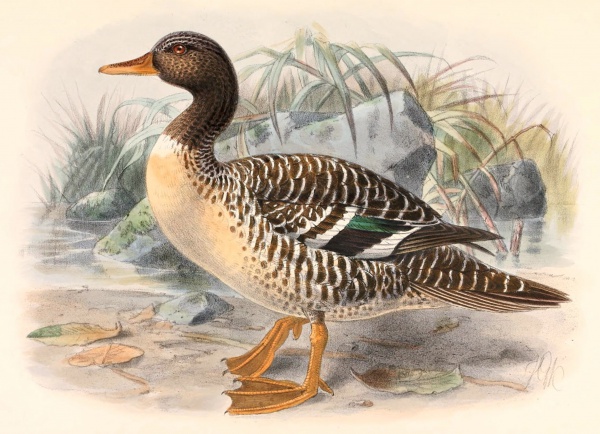Facts About Salvadori's teal
Salvadori's teal, also known as Salvadori's duck, is a distinctive bird native to New Guinea. Characterized by its dark brown head and neck, a body marked with dark brown and off-white patterns, orange legs, and a yellow bill, this bird is a notable inhabitant of highland streams and lakes. The teal typically lays between 2 to 4 eggs near water during the dry season and is an omnivore, consuming both plants and animals.
The International Union for Conservation of Nature (IUCN) lists Salvadori's teal as vulnerable due to its gradually declining population.
First described by Rothschild and Hartert in 1894, Salvadori's teal belongs to its own genus, Salvadorina, and has no recognized subspecies. Over the years, it has been reclassified multiple times within the duck family. The bird is named in honor of the Italian ornithologist Tommaso Salvadori, with its species name, waigiuensis, referring to Waigeo, an island near New Guinea.
Measuring about 38 to 43 cm in length, Salvadori's teal is relatively small. It inhabits the fast-flowing rivers and streams of New Guinea, generally at elevations between 500 and 4,000 meters. As an omnivore, it feeds on a variety of plants, insects, and possibly small fish.
Unfortunately, this bird faces numerous threats, including hunting, habitat degradation, predation by dogs, and competition with introduced sport fish. Its population is estimated to be between 2,500 and 9,999 mature individuals, contributing to its vulnerable status.

 Timor Leste
Timor Leste